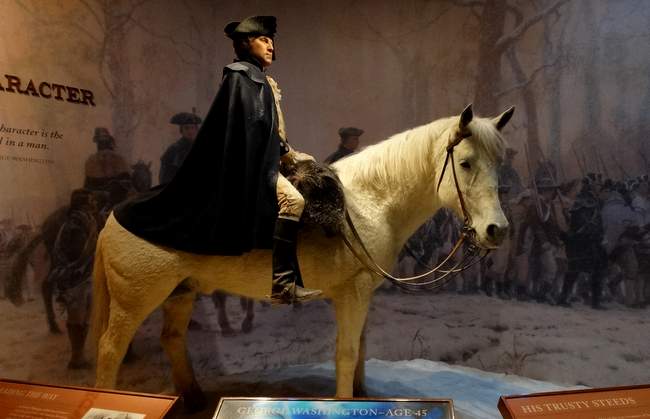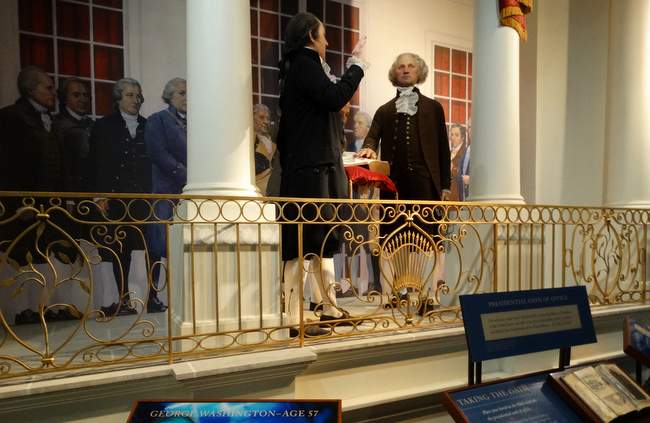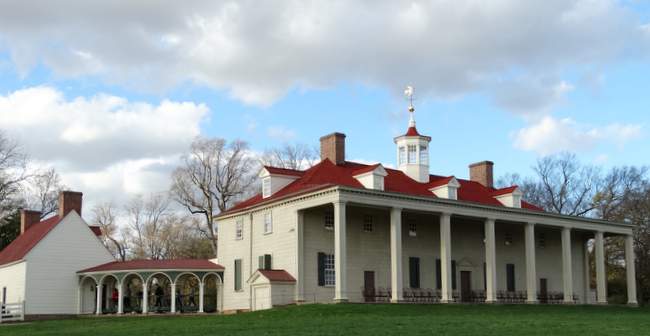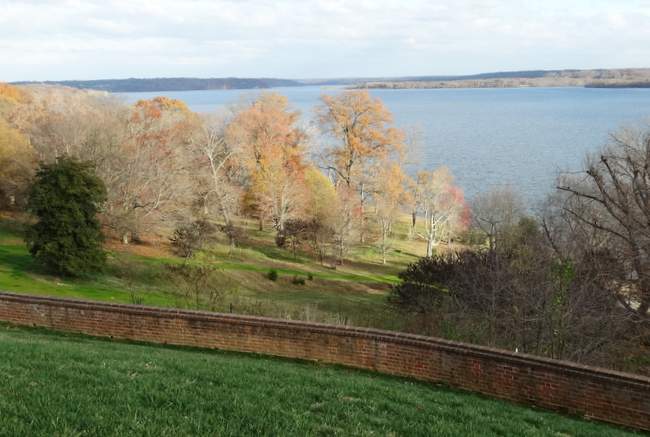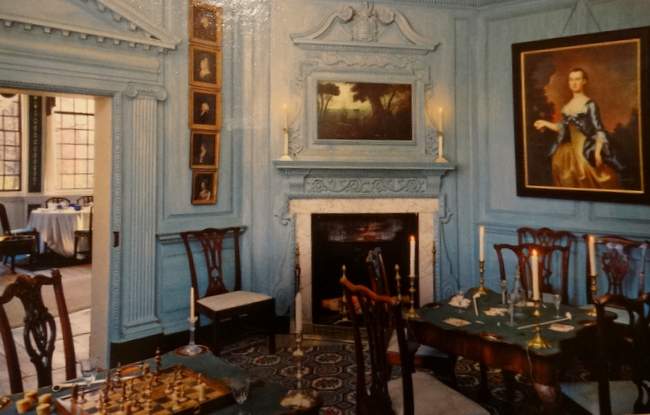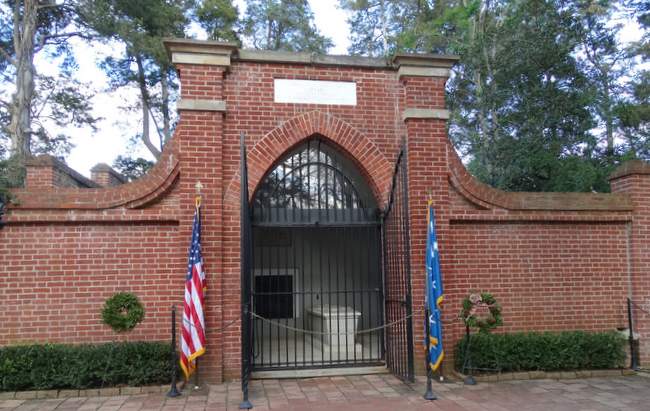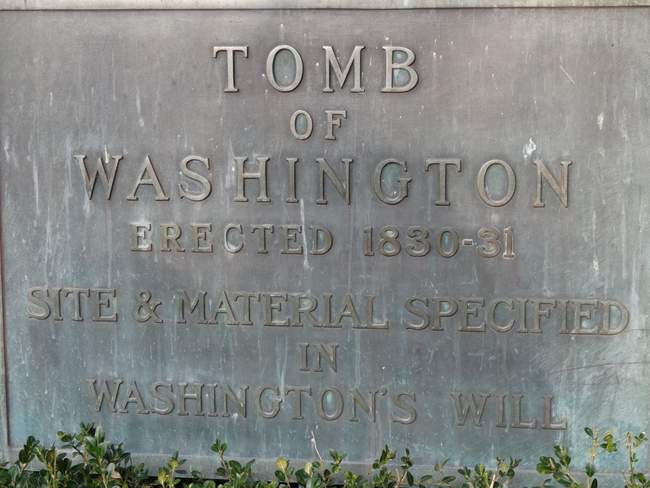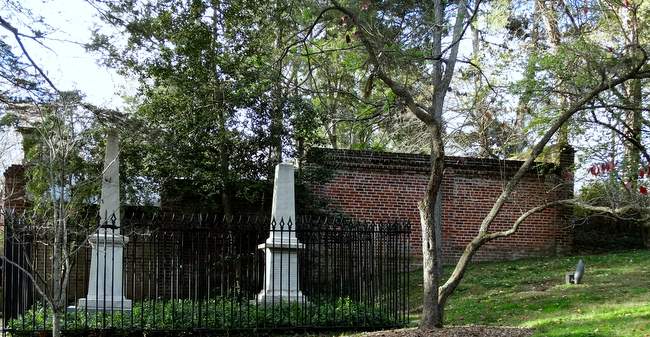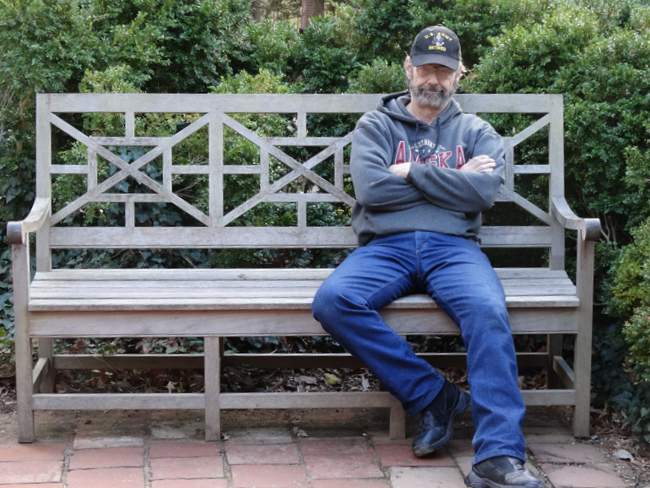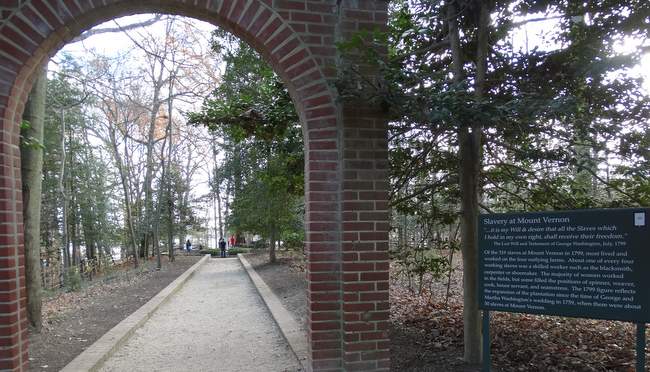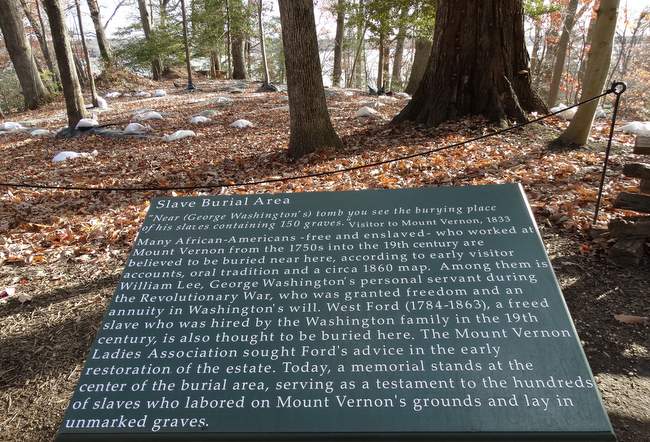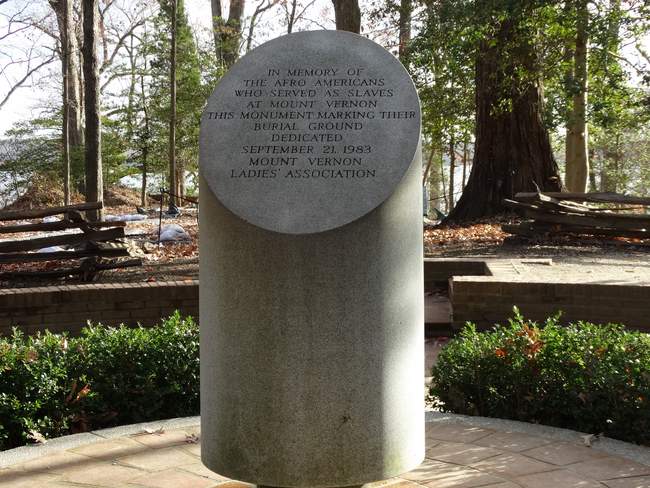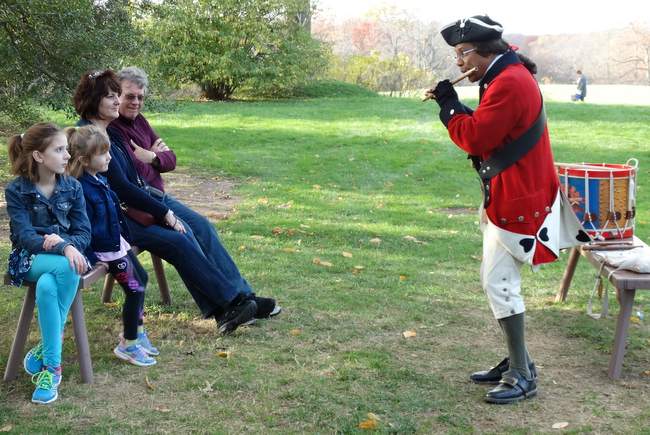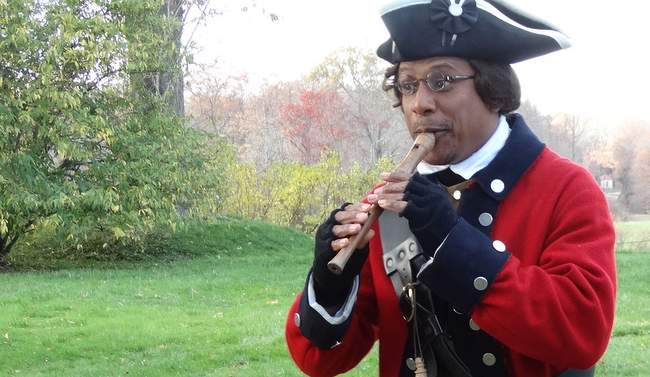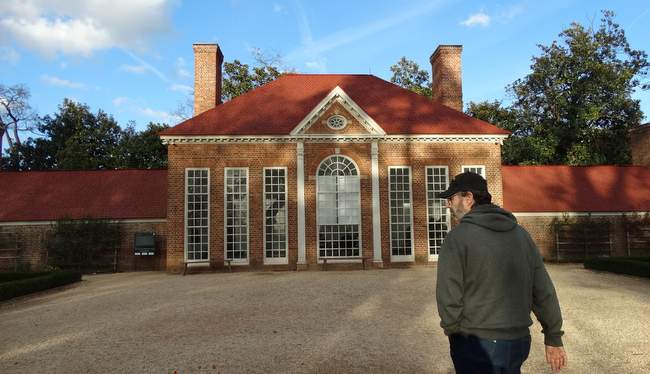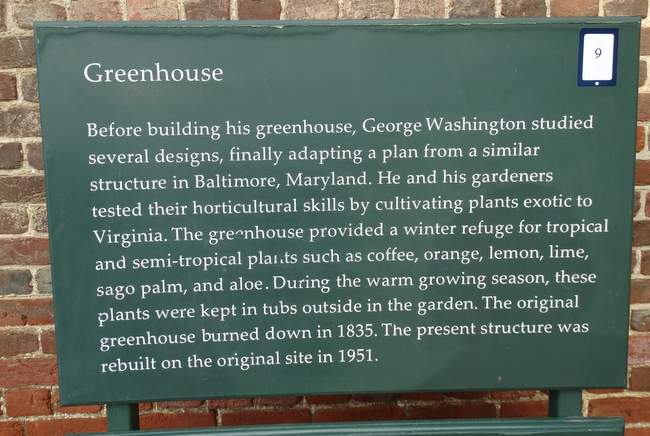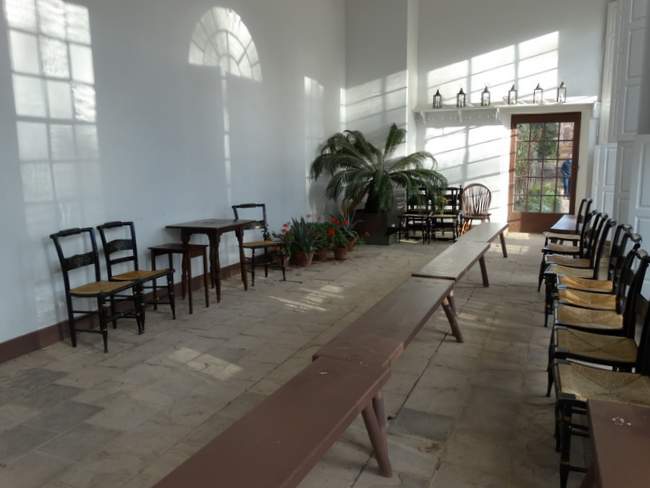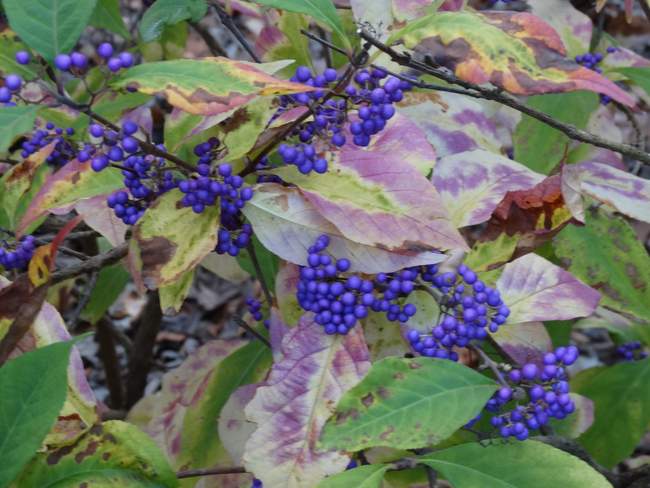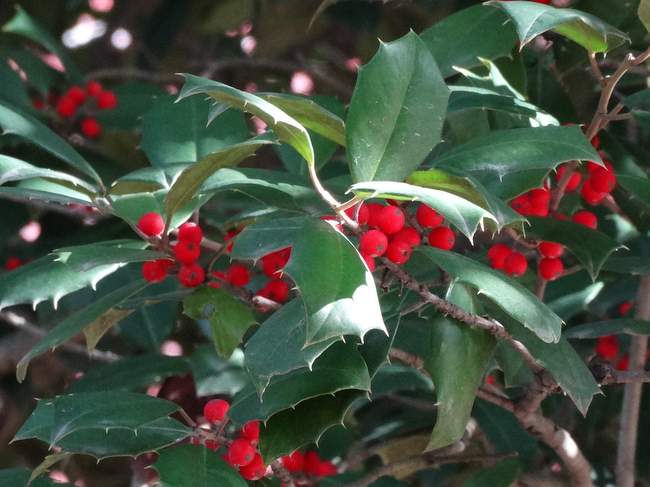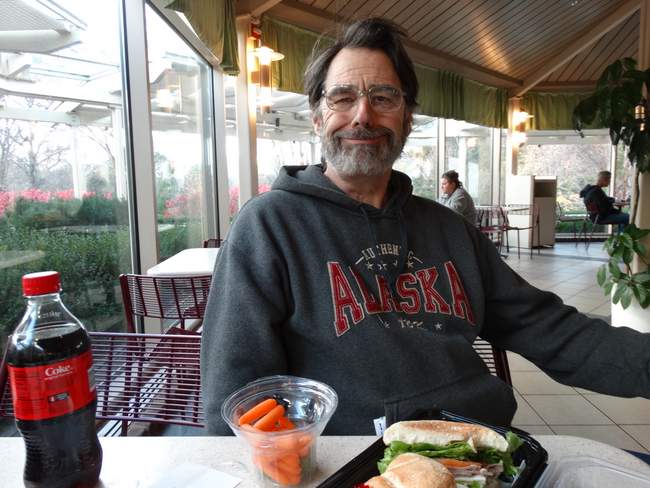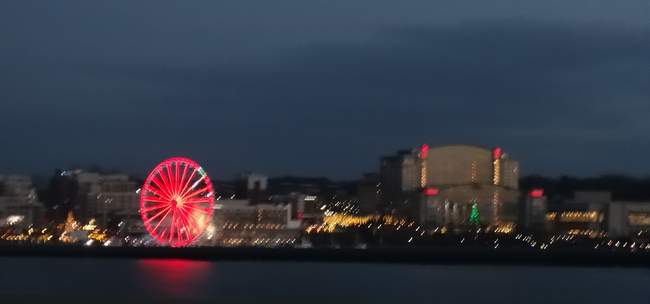I had been to Mt Vernon with my family for the Bicentennial in the spring of 1976. I remember stepping out of the car in the parking lot and smelling the most fragrant magnolias I have ever smelled. Going in late fall is different, but there were other differences too. They have continued renovating and researching the site, so taking Mark to see it today, we both had new things to learn.
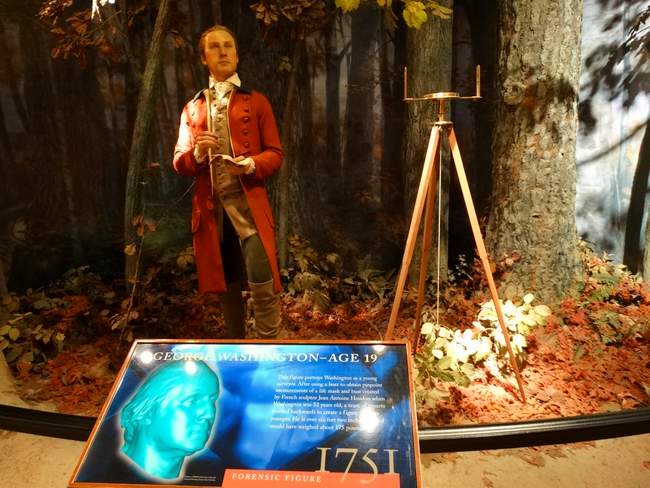
One new thing is that with modern technology, they’ve been able to come up with fairly accurate statues of Washington at different ages. This one is at age nineteen when he worked as a surveyor for the British interests.
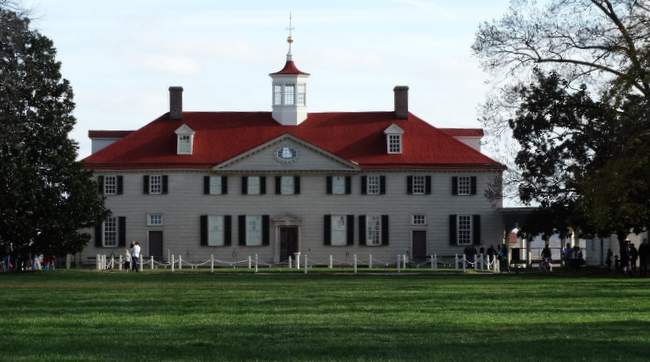
This is the mansion at Mt Vernon. Part of it is the original family home that he inherited, and then he added to it, making it twenty-one rooms with ten bedrooms.
I have a confession to make: They wouldn’t allow pictures to be taken indoors, I suspect because flash would fade the colors, so I bought postcards of the rooms inside. These are not my photos:
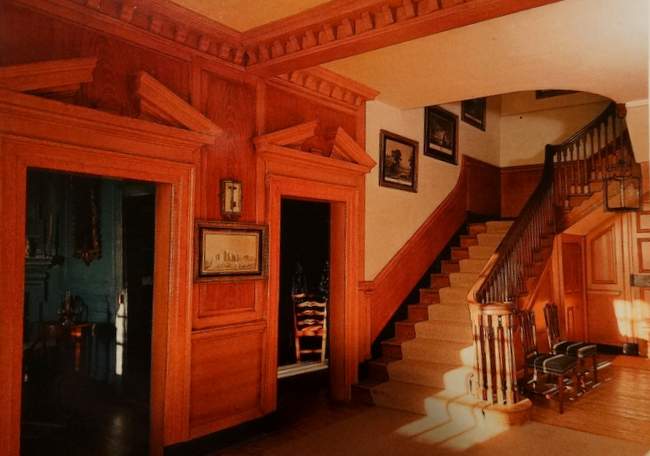
The central passage was large enough that they could have gatherings in it if they so desired. The key to the Bastille hangs on the wall, a gift from the Marquis de Lafayette.
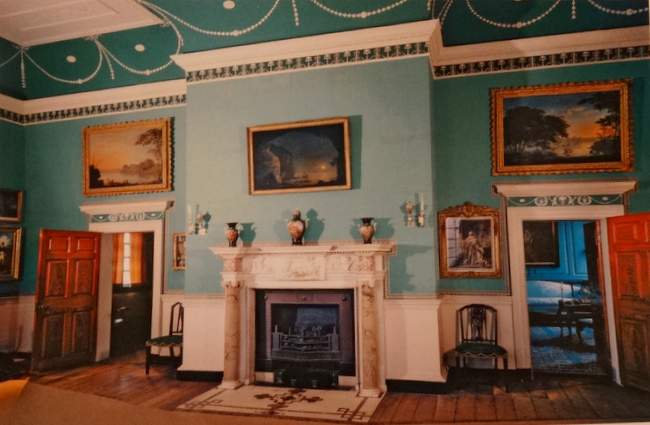
The large dining room. The marble mantelpiece was a gift from Samuel Vaughn, an Englishman, in 1785.
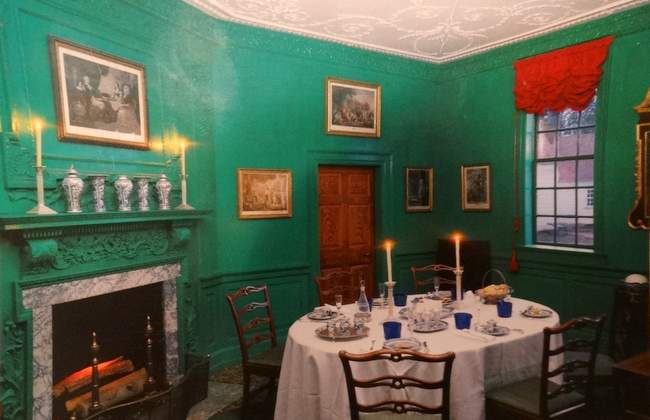
The small dining room. Washington designed and decorated the house, including deciding what paint colors to use on the walls.
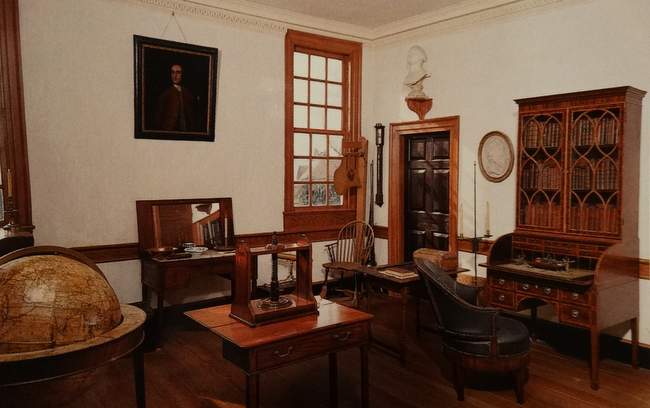
George Washington’s study. He would get up early in the morning (around 4:30) to dress and plan the activities of the day. Few people were invited into his private study, but he did have a slave valet that helped him with dressing and shaving here.
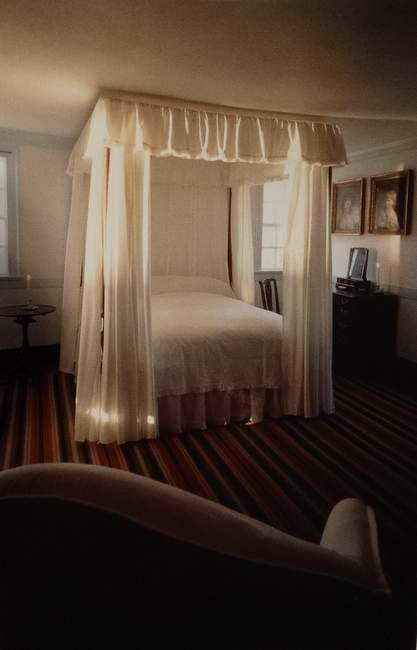
George’s and Martha’s bedchamber. Martha had been married before and had children by her first husband. She and George never had children of their own, but her children produced grandchildren and their portraits are on the wall. George Washington died in this bed.
The story of George’s life is interesting. His father died when he was eleven so his older brother, Lawrence, became his father figure. Lawrence inherited the family home, but he died in his thirties so George inherited it. Martha was a wealthy widow when he courted her, so she added to his wealth. He was an entrepreneur and found all sorts of ways to make money. He was a very successful businessman. I believe I remember hearing that he had fifty-one slaves and there were a few he gave their freedom. Some of the slaves were skilled workers whom he acquired for their talents. He also had indentured servants and hired servants.
When his brother, Lawrence, was ill, George went with him to Barbados hoping that the change of climate would help him. It didn’t. While there, George contracted smallpox and survived, so when he returned, he had no more desire to travel by sea. However, due to his recovery, he was immune to smallpox and he decided to inoculate his wife and his soldiers. The way this was done was to dig out some of the puss from the sores of a sick person, make some scratches on the arm of a healthy person, and put the puss in the scratches. If it worked, the scratches would become slightly infected and they’d be wrapped with bandages until the infection was over. Martha took three treatments before it finally worked for her. About a third of the soldiers George inoculated died, but that was a better rate than the uninoculated soldiers of the British army who were devastated by the disease. When George was leading the revolution, Martha would come to his winter camp and help take care of the soldiers who were ill.
As we learned in the spy museum a couple days ago, George Washington was a spymaster. He had a network of spies including both men and women. He worked out signals and codes for them, used invisible ink, and also leaked misinformation to the British. I heard that one British officer said they weren’t so much out-fought by Washington, but they were outwitted by him.
Washington was tolerant of other religions and tried to set an example by attending services at various other denominational churches. He also wrote a letter welcoming a congregation of Jews who built a synagogue here.
After he left political office, it was his belief that he shouldn’t still be called “president”, so for the remainder of his life he went by the name General Washington. One Thursday he went out on his horse and the weather turned bad. He caught a throat infection of some sort and his neck began to swell. Doctors tried to help him, but there wasn’t much they could do. By Saturday, he stopped breathing. It was a shock to the household because he’d been perfectly healthy prior to getting the infection.
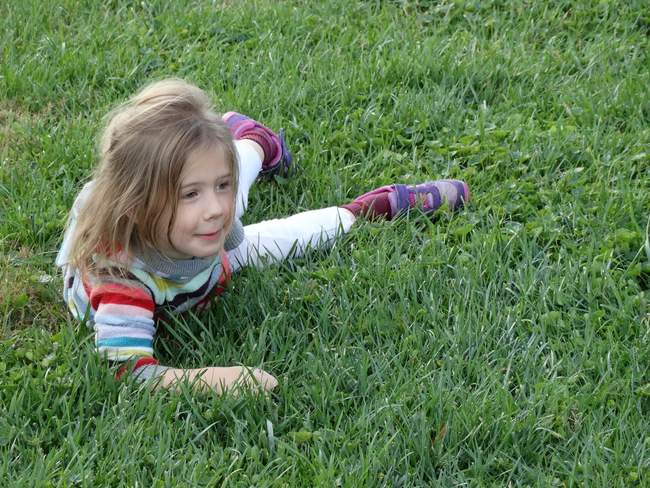
I saw this little girl rolling down a hill. I could just imagine Martha’s grandchildren doing that as well.
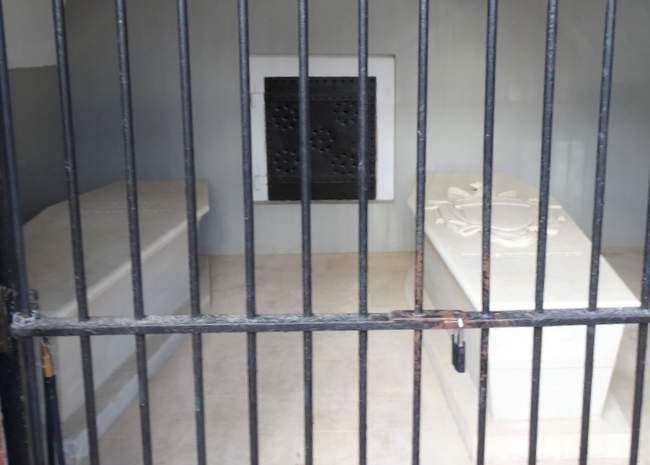
George is buried in the sarcophagus on the right, and Martha on the left. Other family members are interred behind the black door.
As we wandered around the grounds, we heard music, so we followed our ears.
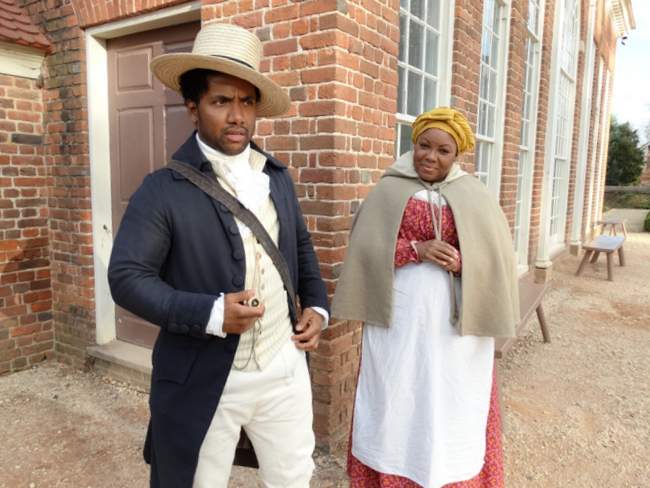
These two interpreters never broke character. The man asked where we were from and when we told him we’re from the Pacific NW, and that one of the states is named Washington, he said he’d let Mr. Washington know that there were territories out west being named for him.
By this time, we were getting hungry so we went to the visitor’s center where there are also shops and restaurants.

